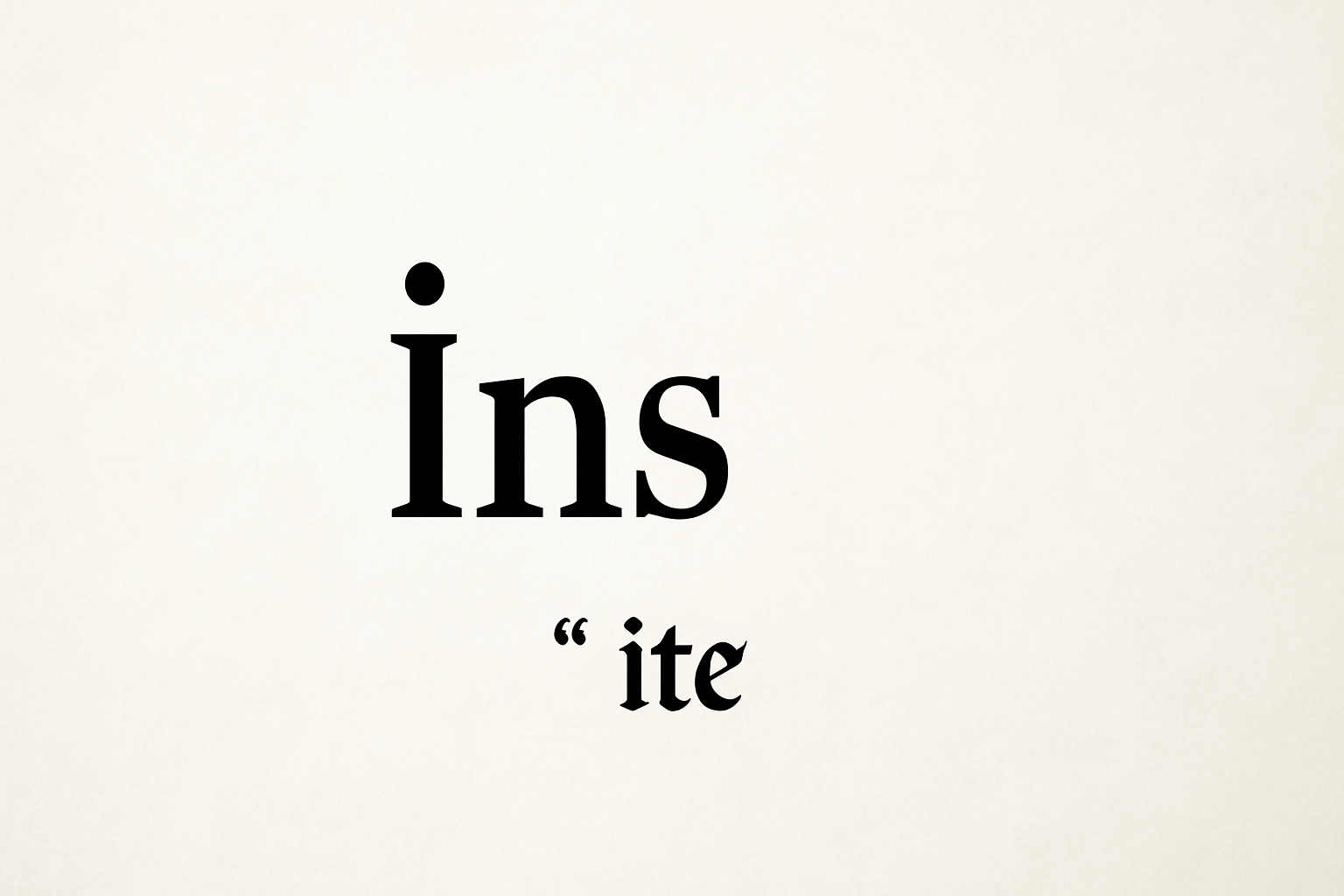In the ever-changing landscape of language, words often evolve in unexpected ways, and new terms emerge as communities and cultures adapt to new technologies, trends, and societal shifts. One such term that has recently piqued curiosity is “i̇ns.” Though it is not a commonly recognized word in mainstream dictionaries or well-known academic texts, “i̇ns” has gained attention for its unique spelling and usage. This article explores the meaning, significance, and various interpretations of “i̇ns” and discusses how it has found a place in modern discourse. By understanding “i̇ns,” we can gain insight into the fluidity of language and how new words shape communication.
The Origins of “i̇ns”
At first glance, the word “i̇ns” may appear to be a simple variation of the common word “ins,” or it may look like a misspelling of “ins” with an added diacritical mark (the dotless “i” — “ı”). This unconventional spelling is a hallmark of many words found in languages that do not rely on the standard Latin alphabet, such as Turkish. The use of the dotless “ı” is specific to languages like Turkish and Azerbaijani, where the letter “i” with a dot is a separate letter from “ı.”
Given that “i̇ns” features the Turkish “ı,” it is possible that this term originates from Turkish or a region where this language or script is prevalent. However, due to globalization and the extensive reach of the internet, “i̇ns” could have transcended its linguistic origins and evolved into a more universally understood term. This type of language innovation is increasingly common in digital spaces, where new words are born out of necessity, creativity, or even humor.
“i̇ns” as a Cultural or Linguistic Symbol
The distinctive appearance of “i̇ns” might have deeper cultural significance. The letter “ı,” which is not found in many Western languages, holds importance in the Turkish language. It is used to represent a specific vowel sound and is an essential part of Turkish phonology. This unique character sets Turkish apart from other languages and adds a layer of complexity to its orthography.
For individuals familiar with the Turkish language, “i̇ns” could serve as a cultural symbol. It may be a nod to linguistic pride or an effort to differentiate oneself in a digital world where language is constantly evolving. Furthermore, the use of “ı” could be a reflection of the ways in which language evolves to reflect identity, heritage, and tradition. It serves as a reminder that language is not just a tool for communication but also an integral part of how people define themselves.
“i̇ns” as a Digital or Internet Term
In the context of the internet, “i̇ns” could also be seen as a product of digital communication. The internet is a space where language is constantly in flux, with new slang, abbreviations, and words regularly emerging. This trend has been most prominent in social media, where users develop shorthand expressions and symbols to convey ideas quickly and efficiently. Platforms like Twitter, Reddit, and TikTok have all contributed to the evolution of online language, and “i̇ns” may very well be one of these new-age creations.
Given its appearance and structure, “i̇ns” could be part of an emerging trend where non-standard characters are used to create new meanings or represent specific ideas. In an age where emojis, hashtags, and other forms of visual shorthand are part of everyday conversation, “i̇ns” might symbolize a broader movement toward visual and phonetic expressions in digital communication. Its use of the Turkish “ı” could also suggest an effort to incorporate multilingual and multicultural elements into the global digital conversation.
Possible Meanings and Uses of “i̇ns”
Since “i̇ns” is not widely recognized or defined in any formal linguistic context, it is open to interpretation. As with many new words or phrases, the meaning of “i̇ns” will likely be shaped by the communities that adopt it and the contexts in which it is used. Below are a few possible interpretations of what “i̇ns” could represent:
A Linguistic Innovation
“İns” could be a linguistic innovation that serves a specific purpose in the way we communicate. Language is constantly evolving to meet the needs of its users, and new terms often arise to address gaps in expression or to provide more concise ways of communicating complex ideas. In this sense, “i̇ns” could be a shorthand or abbreviation for a longer phrase, a cultural reference, or even an abstract concept. It might be used in casual online conversations or social media posts, where brevity is valued.
A Symbol of Identity or Belonging
In some cases, “i̇ns” might be used as a marker of identity, particularly within specific subcultures or communities. For example, people who share a common heritage or language may use “i̇ns” as a way to signal their belonging to a particular group. This could be a way of honoring cultural roots, especially for people who come from regions where the Turkish language or other Turkic languages are spoken. Using “i̇ns” could signify solidarity or pride in one’s linguistic and cultural heritage.
An Acronym or Code
“İns” could also be an acronym for a larger phrase or concept. Acronyms are common in fields such as technology, business, and science, where long phrases or names are shortened for convenience. If “i̇ns” is an acronym, it may represent a term used in a specific industry or sector that has yet to gain widespread recognition outside of that community. In this case, the term could take on more specialized meanings, depending on the context in which it is used.
A Creative Expression or Trend
As with many new words, “i̇ns” could simply be a creative expression or a trend that has caught on due to its novelty or aesthetic appeal. People are often drawn to new and unique terms that feel fresh or exciting, especially in the fast-paced world of social media. The use of “i̇ns” could reflect an individual’s desire to be part of a trend or to embrace new ways of communicating that break from traditional language norms.
The Impact of “i̇ns” on Communication
The emergence of terms like “i̇ns” reflects the larger trends shaping modern communication. In an era where digital interactions often take precedence over face-to-face conversations, new words and expressions help shape how we connect with one another. The rise of “i̇ns” is just one example of how language is becoming more fluid, dynamic, and inclusive of multiple linguistic and cultural influences.
As global communication becomes more intertwined, people from different backgrounds bring their own linguistic influences to the table. Terms like “i̇ns” reflect the growing importance of multilingualism and the blending of cultural references in everyday conversations. This kind of linguistic innovation plays a role in building more diverse and inclusive digital spaces, where people from different parts of the world can engage in meaningful dialogue without being restricted by traditional language boundaries.
Read also: IT Updates by Syndrathia: Transforming the Future of Technology
Conclusion
“İns” is a fascinating example of how language evolves in response to cultural, technological, and social shifts. While its meaning may not be universally defined, the word serves as a reminder of the adaptability and creativity inherent in human communication. Whether it is a linguistic innovation, a cultural symbol, or a product of digital communication, “i̇ns” exemplifies how language is a living, breathing entity that reflects the changing dynamics of society. As new words continue to emerge and gain traction in digital spaces, we will likely see more terms like “i̇ns” that challenge traditional notions of language and help shape the way we communicate in the 21st century.


